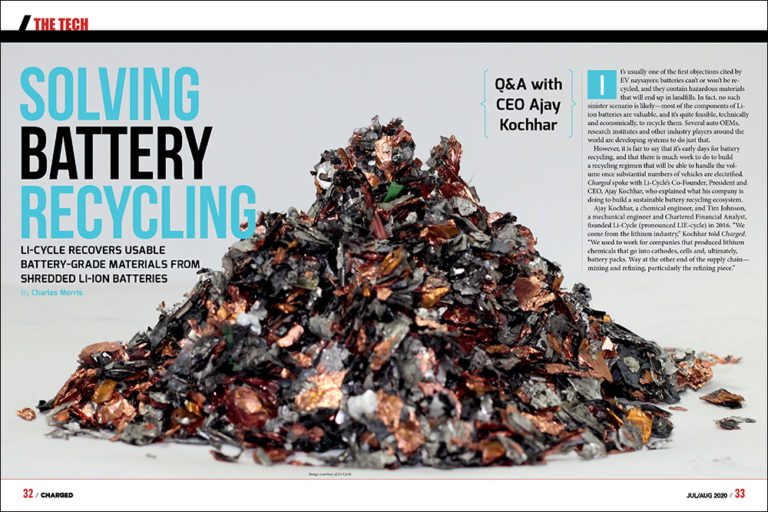Professor Jeff Dahn is a star researcher in the battery field—he has co-authored 730 papers and holds some 73 patents. Professor Dahn and his research group at Dalhousie University in Halifax, Nova Scotia have had an exclusive research partnership with Tesla since 2016. Now Professor Dahn is stepping down from his leadership role at Tesla’s… Read more »
Search Results Found For: "graphite"
Group14 secures funding to scale Li-ion battery production
Group14 Technologies, a global provider of silicon-carbon composite materials for lithium-ion markets, has secured $17 million in a Series B funding round led by SK materials, a manufacturer of special gases and industrial gases. Group14 will leverage this operating capital to scale production to meet the increasing demand for its flagship product, SCC55, which it… Read more »
With backing from VW and JB Straubel, QuantumScape stands out from the crowd of new EV stocks
Electromobility companies are going public at a pace that recalls the dot-com frenzy of the 1990s. Yes, history will probably repeat itself to a certain extent—some of these firms will go belly-up, but others will eventually grow into successful and influential players. One that seems particularly promising is QuantumScape, a California developer of solid-state lithium-metal… Read more »
BASF markets anode binders for Li-ion batteries
Battery manufacturers are striving to increase capacity, reduce charging time and ensure an adequate supply of raw materials. BASF developed its new Licity range of binders in order to meet these needs. Depending on their requirements, customers can choose a series with a certain application focus, such as binders suitable for pure graphite or silicon-containing anodes…. Read more »
Norwegian silicon provider Elkem secures grant to plan new battery material plant
Norwegian silicon specialist Elkem has received 10 million Norwegian Kroner (about $1.1 million) in financial support from Enova, a Norwegian government enterprise that supports the development of clean energy technology. The company will use the funds for initial planning of a large-scale battery materials plant. Elkem’s Northern Recharge project aims to supply the fast-growing battery… Read more »
Tesla Battery Day: a raft of tech advances will deliver cost reductions worth waiting for
We’re used to extremely ambitious (not to say unrealistic) timelines from Tesla—a new Terafactory in a few months, a fleet of Robotaxis before the end of the year—so Elon Musk’s measured, conservative predictions at the long-awaited Battery Day event caught the mainstream press on the wrong foot. “In three years…we can do a $25,000 car… Read more »
New anode material could lead to safer batteries with long cycle life
Researchers at the Karlsruhe Institute of Technology (KIT) and Jilin University have investigated a promising anode material for future high-performance batteries: lithium lanthanum titanate with a perovskite crystal structure (LLTO). As the team reported in Nature Communications, LLTO can improve battery energy density, power density, charging rate, safety and cycle life without requiring a particle… Read more »
Li-Cycle recovers usable battery-grade materials from shredded Li-ion batteries
Q&A with CEO Ajay Kochhar It’s usually one of the first objections cited by EV naysayers: batteries can’t or won’t be recycled, and they contain hazardous materials that will end up in landfills. In fact, no such sinister scenario is likely—most of the components of Li-ion batteries are valuable, and it’s quite feasible, technically and economically,… Read more »
Researchers develop novel battery electrolyte for lithium metal batteries
A new lithium-based electrolyte invented by Stanford University scientists could pave the way for the next generation of EVs. In a study published in Nature Energy, Stanford researchers demonstrated how their novel electrolyte design boosts the performance of lithium metal batteries. “Most electric cars run on lithium-ion batteries, which are rapidly approaching their theoretical limit… Read more »
Solid-state battery tech: What’s close to commercialization, and what’s still years away?
With a fresh round of funding, Wildcat Discovery Technologies is busy expanding its facilities, building up its battery team and doubling down on promising solid-state research projects. We asked the energy storage experts to help clear up the hype around solid-state batteries. Whenever Charged needs to better understand the complexities of the latest and greatest battery… Read more »












